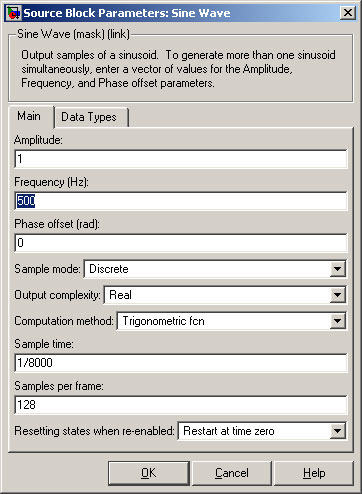| << Chapter < Page | Chapter >> Page > |
The signal-to-noise ratio of an audio signal gives a measurement of the quality of that signal. Signal-to-Noise ratio can be measured in real-time using statistics.
This laboratory shows how to evaluate a model of Signal-to-Noise Ratio measurement using Simulink® and run it on a Texas Instruments C6000 DSP.
Intermediate - Assumes prior knowledge of MATLAB® and Simulink. It also requires some understanding of statistics and some knowledge of Texas Instruments DSPs.
This laboratory was originally developed using the following hardware and software:
Start MATLAB 7.3.0 R2006b then open the SignalToNoise.mdl

The SignalToNoise parent is now displayed. Double-click on the Algorithm box.

The Signal-to-Noise Ratio algorithm is now displayed. Run the model.

Run the model.

It will be seen that the output of the algorithm (“Unfiltered S/N”) varies from frame to frame. The next step is to fine-tune the algorithm parameters.
The model is run several times to determine the best values of the parameters:
Change the sine wave frequency from 500 Hz (default) to 1000 Hz then run the model several times. Make a note of the four different meter outputs (S/N Ratio from RMS Signals, Unfiltered S/N, Filtered S/N and Buffered).

Repeat using 1500Hz and 2000Hz.
Question: Does the input frequency of the Sine Wave have an effect on the accuracy of the algorithm? If it does, then it would be useful to put a digital filter at the input to the algorithm to limit the frequency band.
Change the Sine Wave Frequency to 300Hz then run the model.

Notification Switch
Would you like to follow the 'From matlab and simulink to real-time with ti dsp's' conversation and receive update notifications?